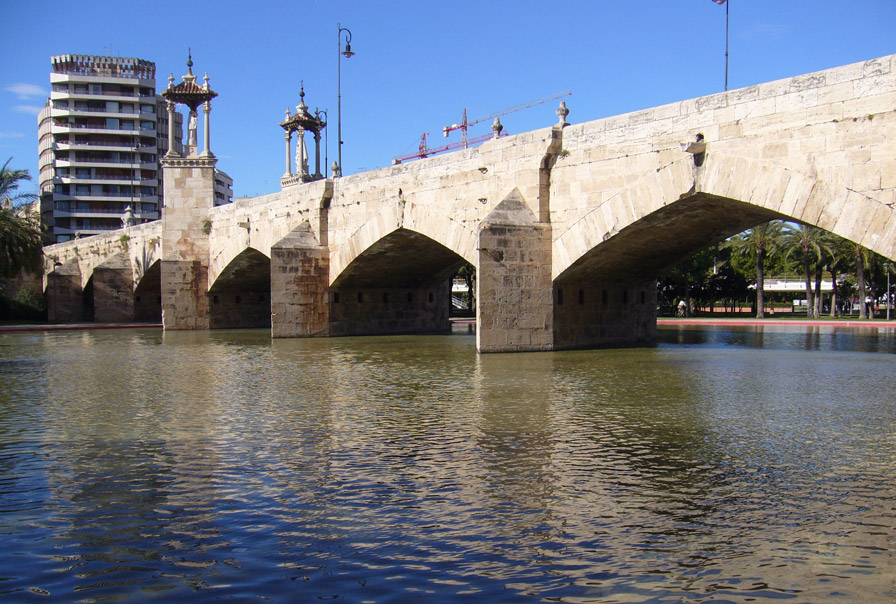[maxmegamenu location=split_right]
Sorolla Route
Born in Valencia in 1863, Joaquín Sorolla was orphaned at two years, when a terrible cholera epidemic killed his parents. Both he and his sister Concha were adopted by their uncles, who soon realized the vocation of young Joaquín for painting. First in the School of Artisans of Valencia and later in the School of Fine Arts, the boy started attending classes, to participate in competitions and to study classical painters. Thus began his "realistic" stage, that earned him his first recognitions. Throughout his career, the Valencian painter exhibited his work throughout Europe, flaunting "luminism", a pictorial style that permeated all his paintings. In this sense, the Sorolla Route takes us through 17 different points of Valencia, from the house where the painter was born and the location of his studio to some of the places where inspiration invited him to create several of his compositions.
- Old City
- Mantas Street, 8
- Church of Santa Catalina
Address: Santa Catalina Square, 3
Telephone: 963 91 77 13 - Peace Street
- Barcelona street, 6
- Don Juan of Austria, 20
- Sorolla Painter Street, 8
- Valencia School of Craftsmen
Address: Kingdom of Valencia Avenue, 40
Telephone: 963 74 65 92 - Carmen Center
Address: Museum Street, 2
Schedule: Tuesday to Sunday from 11 a 21 h
Telephone: 963 15 20 24
- Town Hall Square
- Steps of the Lonja
Address: Carrer de la Llotja, 2, 46001 Valencia, Valencia
Schedule: Tuesday to Sunday from 10 a 14 h, Friday and Saturday of 15 a 19 h
Telephone: 962 08 41 53 - Church of San Martín
Address: C. of St. Vincent the Martyr, 11, 46002 Valencia, Valencia
Telephone: 963 52 29 52 - Birthplace of San Vicente Ferrer
Address: Carrer del Pouet de Sant Vicent, 1, 46003 Valencia, Valencia
Schedule: Monday to Sunday from 9 a 13.30 h, Monday to Saturday from 17 a 20 h - Benlliure House Museum
Address: Carrer de la Blanqueria, 23, 46003 Valencia, Valencia
Schedule: Tuesday to Sunday from 10 a 14 h, Tuesday to Saturday from 15 a 19 h
Telephone: 963 91 91 03 - Valencia Cathedral
Address: Plaça de l’Almoina, s/n, 46003 Valencia, Valencia
Telephone: 963 91 81 27 - The Round Square
- Exhibition Palace
Address: Galicia Street, 3, 46010 Valencia, Valencia - Sea bridge
Birthplace of Joaquín Sorolla
Strolling through the streets of Old City (1) there is an air of traditionality and historicity. Every corner owes its existence to the practice of trades that in the foral era were essential for the economic development of Valencia.. A) Yes, the name of certain streets derives from those artisans who carried out their commercial activities in them. It is the case of the Mantas street (2), that welcomed the profession of those who made a living from the sale of cloths and fabrics.
As well, at the height of the number 8 a ceramic panel marks the place where a 27 February 1863 Joaquín Sorolla was born. In her, we can see a drawing of one of the painter's self-portraits and a beach scene. Even though he only lived there a year, It is said that he had great affection for the place where his parents' knitting shop had been. Her great-granddaughter says that on one of her innumerable walks to the place she took a slab from the ground and proclaimed: "On this slab I came into the world". Currently, This slab is exhibited in a showcase in the Sorolla Museum.
Church of Santa Catalina
Let's walk next to the Church of Santa Catalina (3), a Gothic-style temple that was affected by a fire in the mid-16th century and had to be partially rebuilt. The church is located in the Plaza Lope de Vega, enclosed in the tortuous framework of medieval Valencia, in the “Barrio del Mercado”, and in it the illustrious painter Joaquín Sorolla was baptized. The building stands out for its emblematic baroque tower, current that permeated the building at the end of the 18th century following the prevailing fashion.
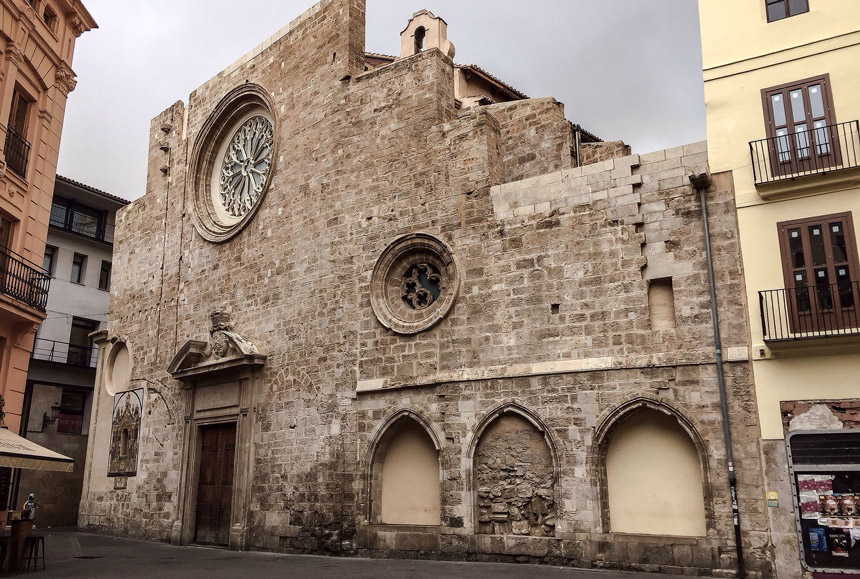
Residence of the Sorolla Bastida family
The Peace street (4) in Valencia it has one of the main urban arteries and commercial roads of the city. We will leave behind the beautiful perspective of the Santa Catalina tower, and we will go down the Calle de las Comedias y de las Universidades until we reach the Barcelona street (5).
There the Sorolla family moved in 1864, shortly after Concha was born, the only sister of the painter. In the number 6 the father of the children died from that street, victim, like his wife, of the cholera epidemic that devastated Valencia in 1865.
Foster home of Joaquín and Concha Sorolla Bastida
Just a few meters to the south, descending the street of the Nuns of Sta. Catalina, on Don Juan of Austria, 20 (6), the marriage formed by Isabel Bastida and José Piqueras gave shelter to the orphans. They were about his uncles. In vain, José tried to teach Joaquín the trade of locksmith, since he soon realized that the boy's true vocation was painting.
Former site of the School of Artisans of Valencia
On the street since 1900 honor the name of the painter Joaquín Sorolla (7) the School of Artisans of Valencia was located, place where the still young artist went to give his first classes between 1876 and 1878. You hardly have to walk to get to this point of the city that today brings together numerous offices of financial institutions, but that at that time it existed with the aim of promoting free practical teaching of Arts and Crafts.
Valencia School of Craftsmen
At the juncture between the Ruzafa and Gran Vía neighborhoods is the Kingdom of Valencia avenue, whose number 40 houses the current School of Craftsmen (8). She preserves in her artistic collection an oil painting by Joaquín Sorolla donated by her son, as well as some drawings from the period in which he attended the center.

Carmen Center
In the north of Ciutat Vella is located the Carmen Center for Contemporary Culture (CCCC) (9), an old convent rehabilitated for cultural use. It was born with the aim of welcoming a wide spectrum of current art without forgetting other branches of thought such as sociology., the economy, law or medicine. This monumental complex illustrates important stages in the history of architecture in the city. From 1838 hosts the headquarters of the Royal Academy of Fine Arts of Valencia, place where Sorolla was formed between 1878 and 1881 and that reserves one of its rooms for his life and work.
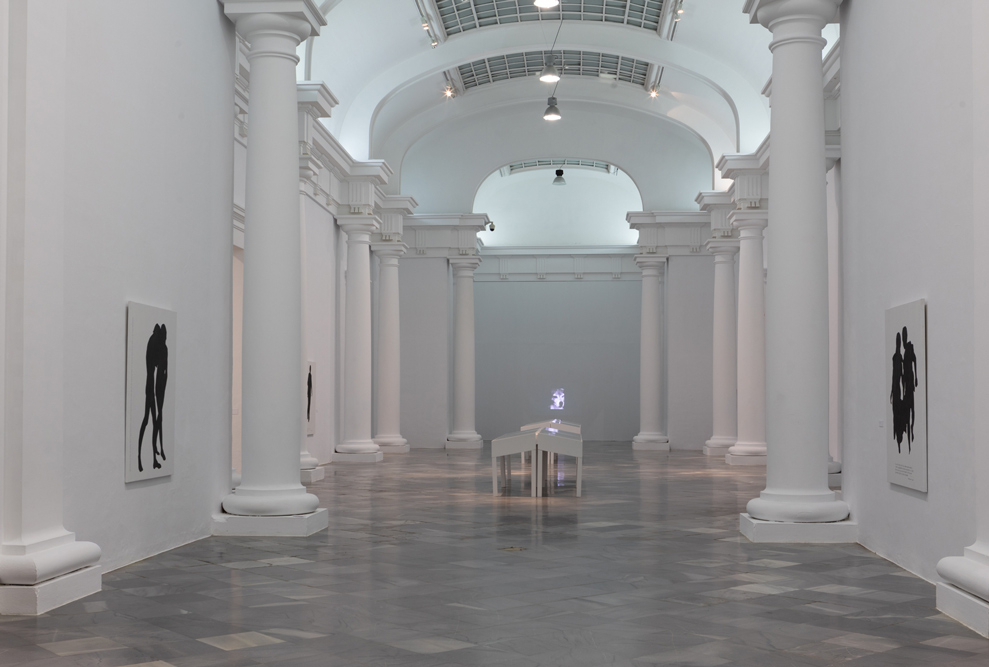
Photographic studio and address of the García Castillo family
In the number 10 from then San Francisco Square (10) Sorolla could count on an improvised painting studio. Currently it is the Plaza del Ayuntamiento de Valencia, one of the most important and central. In the wide flat space, the traditional mascletás are celebrated every year during the Fallas festival..
Steps of the Lonja. Stage of the play "El grito del palleter"
Sorolla set the scene known as “El grito del palleter” on the steps of the Silk market (11). This building is a Valencian civil Gothic masterpiece that was an emblem of wealth and the commercial revolution that arose in the city during the 15th century.. It is very worthwhile to walk through its columnar hall admiring the architecture of one of the most famous buildings in Valencia.

Church of San Martín (12)
On 1888 Sorolla married Clotilde García del Castillo in this church that mixes the Valencian Gothic and Baroque styles.
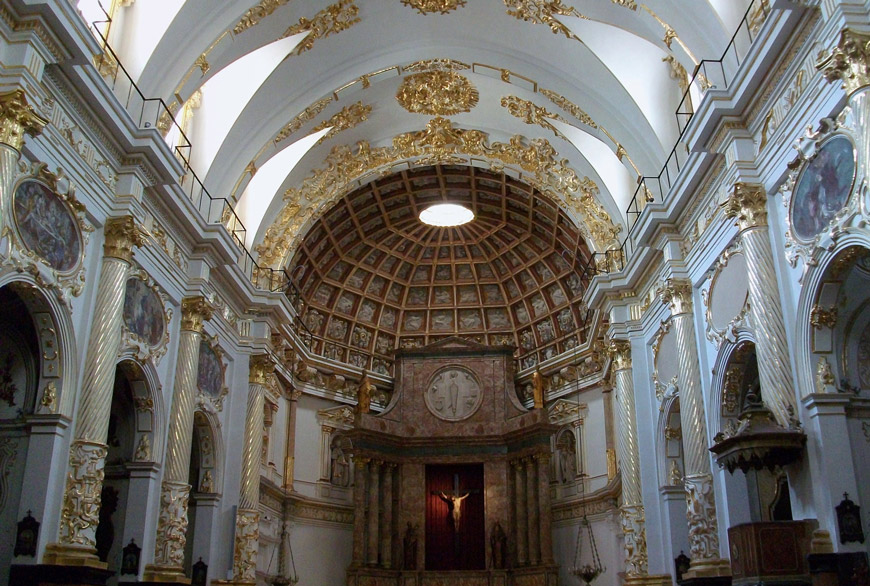
Birthplace of San Vicente Ferrer (13). Stage of the work "Exvoto"
On 1892 Sorolla used this setting to create his work "Exvoto". In it we see a woman holding a baby in the air with the pouet de Sant Vicent in the background, a place people turned to for protection of their children in a time of high infant mortality.
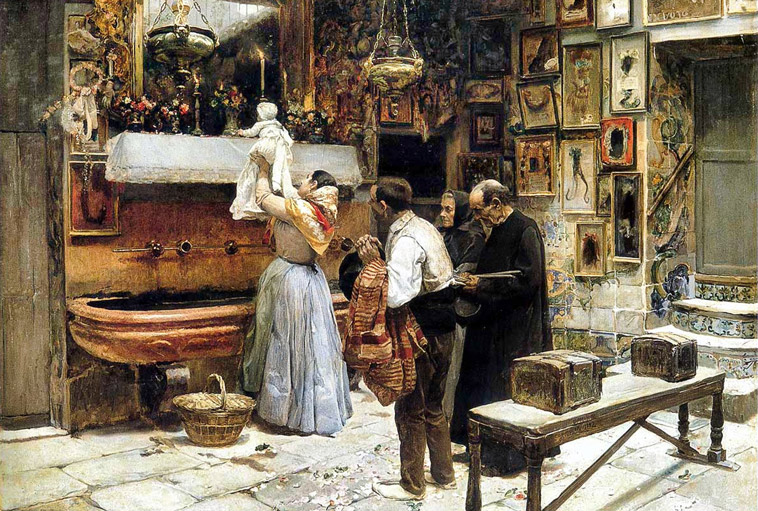
Benlliure House Museum (14)
This place is dedicated to a family of Valencian painters and sculptors closely linked to Joaquín Sorolla, the Benlliure. Here an important artistic collection is exhibited and all the details of the bourgeois home of the time are reconstructed.
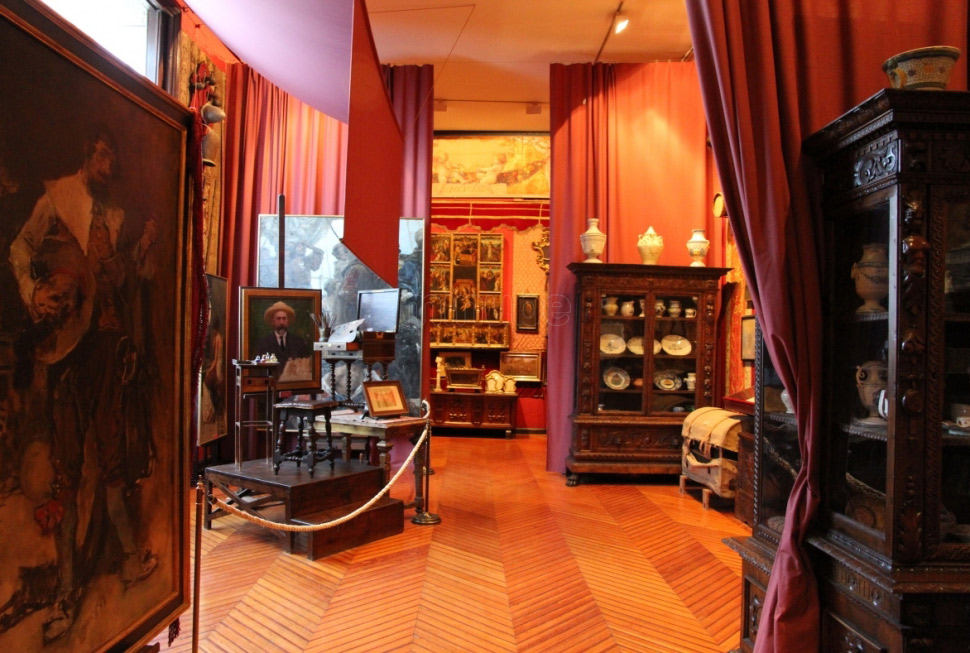
Valencia City Council
The artistic collection of Valencia City Council (15) includes fundamental works such as "My family" (1901). Building, known as Casa Consistorial, integrates two constructions from well differentiated eras: on the one hand, the House of Teaching, built during the eighteenth century, and on the other, the body of the building, that belongs to the twentieth century. Sorolla was recognized by the city government as a most deserving son on the occasion of his successes at the National Exhibition and at the Universal Exhibition in Paris..
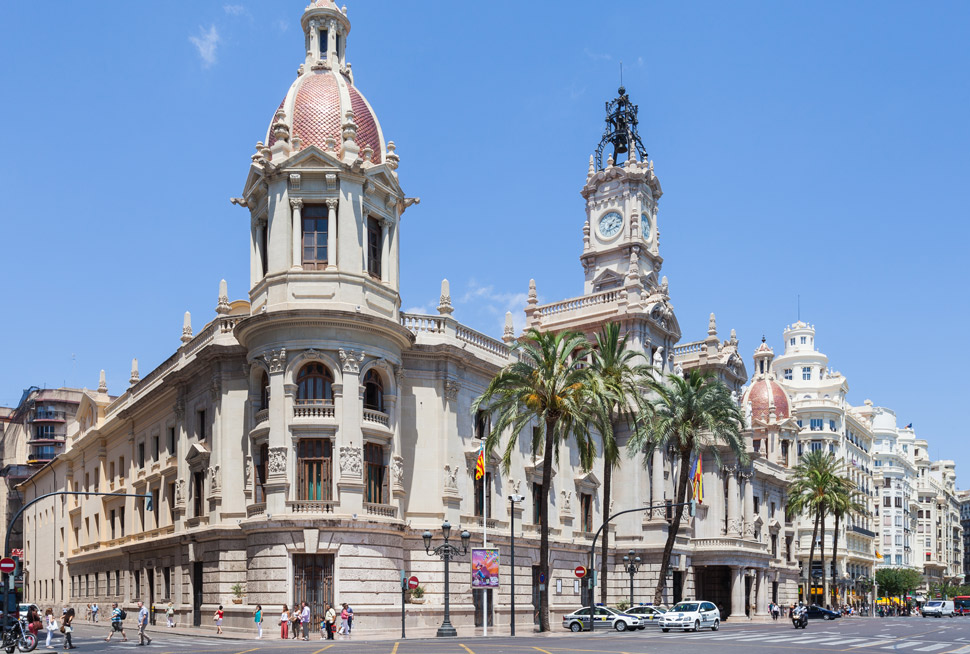
Valencia Cathedral
The Valencia Cathedral (16) was the reason for some early works of the Valencian painter. It was also a highlight of his nostalgic walks around the city when he visited., after having settled in Madrid definitively.
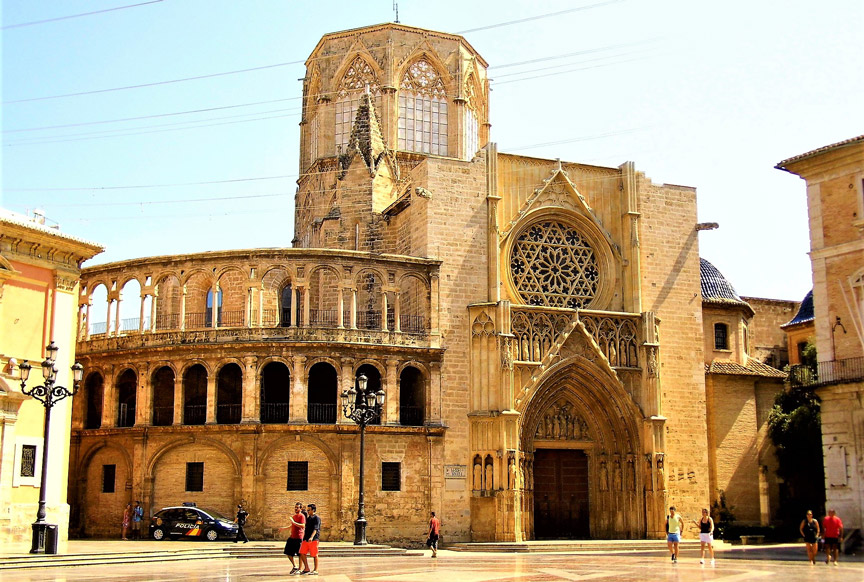
The Round Square
The surroundings of the Silk Exchange, the old market, the Round Square (17) and the Iglesia de los Santos Juanes made up the neighborhood in which Sorolla was born and raised.
Exhibition Palace
Sorolla's work was housed in the defunct Palace of the Arts along with that of Cecilio Plá, Salvador April, José and Mariano Benlliure. Beside this pavilion stands the exhibition palace (18), a Valencian modernist style building that hosted the Valencian Regional Exhibition in 1909 and later decided to be preserved for its architectural value.
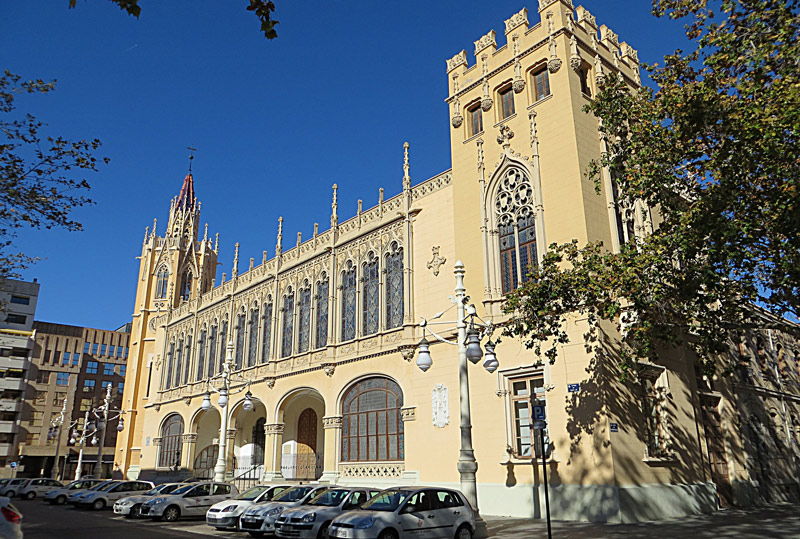
Casilicio de la Virgen de los Desamparados on the Bridge of the Sea
On 1916 Sorolla moved to Valencia to paint one of the decoration panels for the Hispanic Society of America in New York. The Casilicio de la Virgen de los Desamparados in the Sea Bridge (19) was one of the elements chosen by Sorolla to represent Valencia. This pedestrian bridge crosses the Turia river bed diagonally, communicating the Plaza de América and the Paseo de la Alameda.
